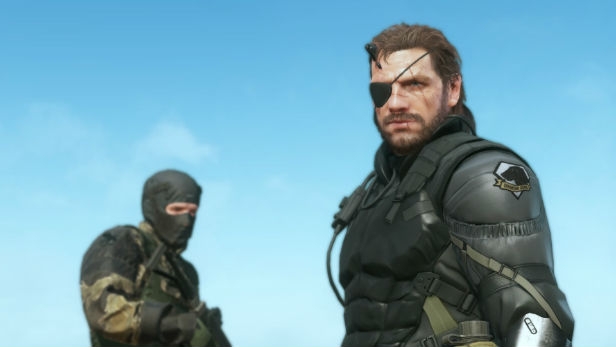It’s funny that, after developing such a reputation for melodrama over a long career, Hideo Kojima’s purported departure from Konami seems to have come around fairly quietly.
It’ll be a shame to see him leave, as there’s no one else in the industry that could put such a stamp on a franchise, but if he is legitimately throwing in the towel this time, then he’s done so in a way that proves just how at sea Konami will be without its most interesting asset.
That’s because this is a startling videogame, frankly. Everything from its most overt third-person shooter features to its stealth intricacies are remarkably well thought out and remarkably well implemented, with that typical, unique Metal Gear sense of humour ticking away in the background, this time in the form of preposterous cardboard box functions and the ability to Fulton extract everything from shipping containers to bewildered birds of prey.
However, for the most part, the eccentricities have been pared back in favour of a more focussed, more adult experience than the franchise is used to.
Initially, you may find this quite jarring if you’re a long-term Metal Gear fan. The Phantom Pain tackles themes like child soldiers head on where other Metal Gear games in the past have merely relied on them as back story, and the violence feels significantly more visceral this time.
Metal Gear Solid has such an established tone, yet changing up the formula for The Phantom Pain has made it feel fresh and interesting again without disrupting the serious/fun balance too much. Sometimes, it even feels like a different game altogether.
Many other things have changed, though. For one, this is undeniably one of the best looking games on console, even with such a demanding (mostly) open world to explore. Secondly, the enemy AI has been developed to insane levels, with the many mercenaries patrolling the game’s vast playgrounds reacting intelligently to every suspicious noise, every errant tranquiliser dart.
It’s so sophisticated that the world reacts directly to your actions – spend all your time shooting enemies in the head with your tranquiliser and eventually they’ll all start showing up in helmets.
Missions are structured in a similar way to Peace Walker on the PSP, in that you pick and choose an assignment from a list of main missions and side ops, choose a loadout, choose a time of arrival and then fly off in a chopper to tackle your objective. Once you’re on the ground, the game opens up in ways that its predecessors never did.
It’s remarkable the amount of freedom you’re given to tackle missions, although the difficulty is such that going in loud rather than sticking to the shadows is rarely a viable option. Missions that advance the typically labyrinthine plot are great, but it sometimes feels like there are a few too many ‘drop in, extract bloke, bug out’ missions – some of these could’ve been trimmed back.
Perhaps most importantly, being that this is a stealth game, it’s important to mention that the stealth mechanics in The Phantom Pain are best in class. As we’ve mentioned, enemies react in really intelligent ways – which is the first piece of the puzzle – and the way Snake handles feels weighty and intuitive, especially when popping into cover automatically and utilising the awesome cover dive that was implemented in prequel chapter Ground Zeroes.
Add to all this the inclusion of robust base building features, about a million side missions, a cool buddy system in which you can tackle missions with NPC friends in tow and much more, and you’re left with the most accomplished, most ambitious game of 2015.
